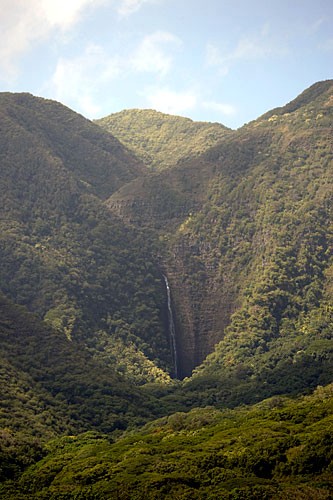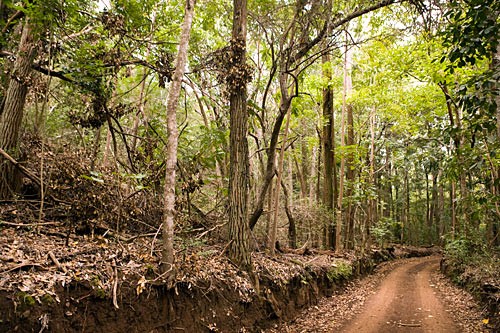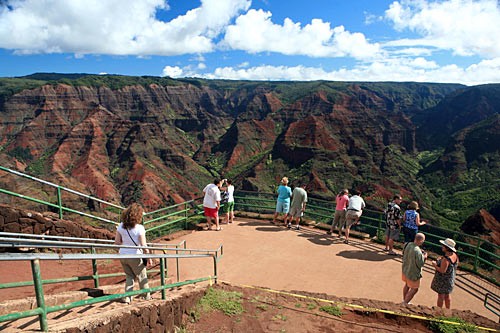6 Best Hikes in Hawaii: Molokai, Kauai and More
By Jeanette Foster
Here's how you can see Oahu, Molokai, Lanai, the Big Island, and Kauai's best natural sights on foot.
Photo Caption: Hikers can climb 11 miles into a dormant volcano on Maui's Sliding Sands Trail in Haleakala National Park.
Photo Caption: Hikers can climb 11 miles into a dormant volcano on Maui's Sliding Sands Trail in Haleakala National Park.
Diamond Head Crater, Oahu
This is a moderate, but steep, walk to the summit of the 750-foot volcanic cone, Hawaii's most famous landmark, with a reward of a 360-degree view of the island. The 1.4-mile round-trip takes about 1½ hours. The entry fee is $1. Wear decent shoes (rubber-soled tennies are fine), and take a flashlight (you'll walk through several dark tunnels), binoculars (for better viewing at the top), water, a hat to protect you from the sun, and a camera. You might want to put all your gear in a pack to leave your hands free for the climb. Go early, preferably just after the 6:30am opening, before the midday sun starts beating down.
Photo Caption: You have to pay a $1 fee to climb the 1.4 miles to the top of Diamond Head, but the view from the 750-foot summit is priceless.
Photo Caption: You have to pay a $1 fee to climb the 1.4 miles to the top of Diamond Head, but the view from the 750-foot summit is priceless.
Devastation Trail, Hawaii Volcanoes National Park, Big Island
Up on the rim of Kilauea Iki Crater, you can see what an erupting volcano did to a once-flourishing ohia forest. The scorched earth, with its ghostly tree skeletons, lies in sharp contrast to the rest of the lush forest. Everyone can take this .5-mile hike on a paved path across the eerie bed of black cinders. The trail head is on Crater Rim Road at Puu Puai Overlook.
Photo Caption: The Big Island's best-known attraction is Hawaii Volcanoes National Park, where you can witness Pele's spectacular natural fireworks.
Photo Caption: The Big Island's best-known attraction is Hawaii Volcanoes National Park, where you can witness Pele's spectacular natural fireworks.
Haleakala National Park, Maui
Hiking into Maui's dormant volcano is really the best way to see it. The terrain inside the wilderness area of the volcano, which ranges from burnt-red cinder cones to ebony-black lava flows, is simply spectacular. The best route takes in two trails: head into the crater along Sliding Sands Trail, which begins on the rim at 9,800 feet and descends into the belly of the beast, to the valley floor at 6,600 feet, and back out along Halemauu Trail. Hardy hikers can consider making the 11-mile one-way descent, which takes 9 hours, and the equally long return ascent in 1 day. The rest of us will need to extend this steep but wonderful hike to 2 days.
Photo Caption: Scale a 10,000-foot dormant volcano and peek into the crater at Haleakala National Park.
Photo Caption: Scale a 10,000-foot dormant volcano and peek into the crater at Haleakala National Park.
Halawa Valley, Molokai
Of the five great valleys of Molokai, only Halawa, with its two waterfalls, golden beach, sleepy lagoon, great surf, and offshore island, is easily accessible. An easy hike will take you from the ocean to the foot of a waterfall. Pilipo Solotario and his family, who own the land in the valley, are the only people allowed to lead hikes into Halawa. They lead daily tours, which begin at the County Park pavilion, with a history of the valley, a discussion of the Hawaiian culture, and a display of the fruits, trees, and other flora you will be seeing in the valley. Along the hike, Solotario stops to point out historical and cultural aspects, including a sacred heiau. At the waterfalls visitors can swim in the brisk pool water. Contact Molokai Fish & Dive (tel. 808/553-5926; www.molokaifishanddive.com) for reservations.
Photo Caption: The majestic Halawa Falls cascade 250 feet down into the remote valley, which can only be reached by guided tour.
Photo Caption: The majestic Halawa Falls cascade 250 feet down into the remote valley, which can only be reached by guided tour.
Munro Trail, Lanai
If it hasn't been raining and the ground is dry, do a little exploring. The adventurous will spend the day climbing to the top of Lanai at Lanaihale on the Munro Trail. This tough, 11-mile round-trip, uphill climb through the groves of Norfolk Island pines is a lung-buster, but if you reach the top, you'll be rewarded with a breathtaking view of Molokai, Maui, Kahoolawe, the peaks of the Big Island, and -- on a really clear day -- Oahu in the distance. Figure on 7 hours hiking. The trail follows Lanai's ancient caldera rim, ending up at the island's highest point, Lanaihale. Go in the morning for the best visibility. After 4 miles, you'll get a view of Lanai City. The weary retrace their steps from here, while the more determined go the last 1.25 miles to the top. Die- hards head down Lanai's steep south-crater rim to join the highway to Manele Bay. The not-so-adventurous will take a four-wheel-drive vehicle. Pencil in a soak in a hot tub on your return.
Photo Caption: The challenging Munro Trail takes you on an 11-mile trek to Lanai's highest point, where you'll be rewarded with an incredible view.
Photo Caption: The challenging Munro Trail takes you on an 11-mile trek to Lanai's highest point, where you'll be rewarded with an incredible view.
Waimea Canyon Trail, Kauai
The Canyon Trail to the east rim gives you a breathtaking view into the 3,567-foot-deep canyon. Park your car at the top of Halemanu Valley Road (btw. MM 14 and MM 15 on Waimea Canyon Rd.). Walk down the not very clearly marked trail on the 3.5-mile round-trip, which takes 2 to 3 hours and leads to Waipoo Falls (as does the next hike) and back. The 3-hour round-trip hike to Waipoo Falls is one of Kauai's best hikes. The two-tiered, 800-foot waterfall that splashes into a natural pool is worth every step it takes to get here. To find the trail, drive up Kokee Road (Hwy. 550) to the Puu Hina Hina Outlook; a quarter-mile past the lookout, near a NASA satellite tracking station on the right, a two-lane dirt road leads to the Waipoo Falls trail head. From here, the trail winds gently through a jungle dotted with wild yellow orchids and flame red torch ginger before it leads you out onto a descending ridge that juts deep into the canyon. At the end of the promontory, take a left and push on through
the jungle to the falls. Reward yourself with a refreshing splash in the pool.
Photo Caption: The 1-mile wide and 12-mile long Waimea Canyon is a stunning natural formation that's often compared to the Grand Canyon.
Photo Caption: The 1-mile wide and 12-mile long Waimea Canyon is a stunning natural formation that's often compared to the Grand Canyon.












